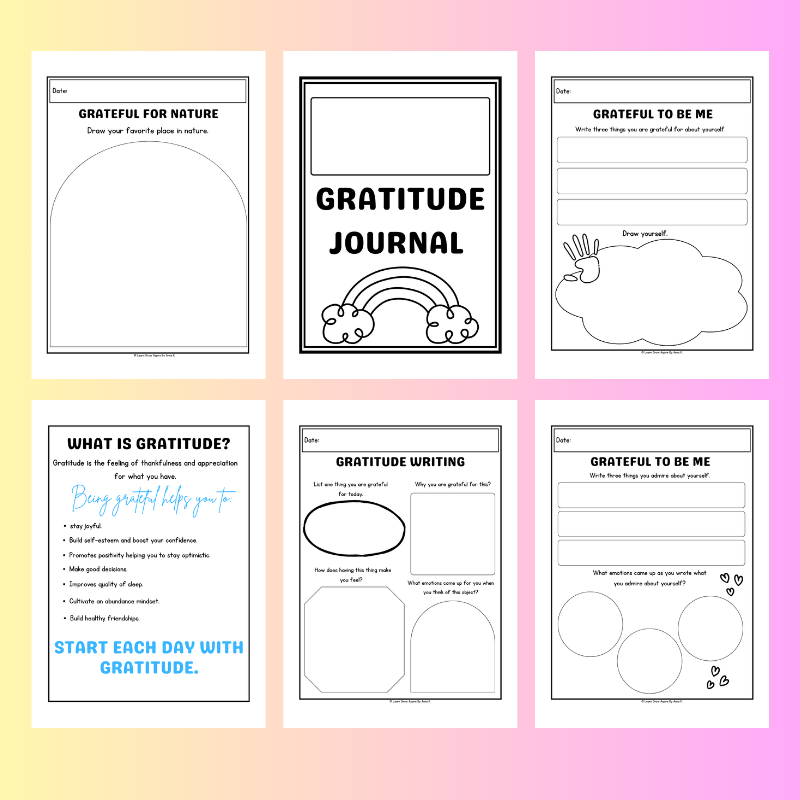Explore these simple and fun ways how to teach gratitude to your kids.
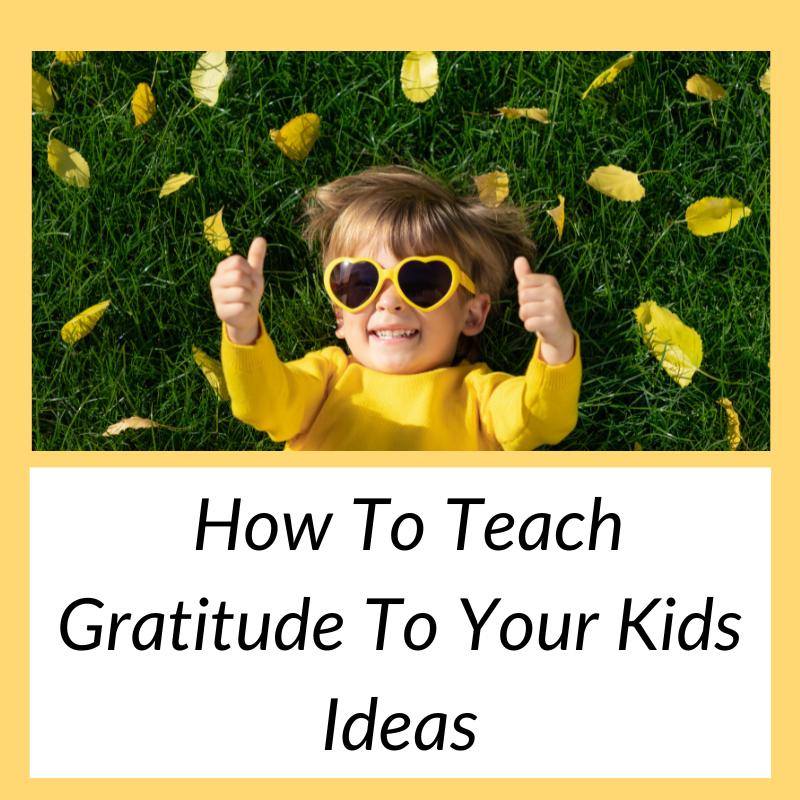
SCROLL DOWN FOR FREE PRINTABLE!
Fostering gratitude at an early age is one of the most powerful habits you can teach your kids. It’s a life habit when taught will only continue growing.
You are guiding them to cultivate an abundance mindset rather than a scarcity mindset. This helps them to appreciate their current life situation instead of feeling they never have enough or comparing what they have to others.
And we all know that famous quote:
“Comparison is the thief of joy” Theodore Roosevelt.
How Can Gratitude Benefit Your Kids

Practicing gratitude can be incredibly beneficial to your kids in numerous ways. Here are some key benefits:
Emotional Well-being
Gratitude helps children develop a more positive outlook on life. Recognizing and appreciating what they have can increase happiness and reduce envy or resentment toward their siblings, friends, or relatives.
Build Healthy Relationships
Kids who practice gratitude have better relationships with friends and family members. Through a simple act of expressing gratitude kids can foster stronger connections and improve their social interactions.
Enhanced Empathy
Gratitude encourages children to be thoughtful and to consider the perspectives and feelings of others helping them become more considerate and compassionate individuals.
Build Resilience
When kids learn to focus on the positives in their lives, they are better equipped to handle spontaneous challenges and setbacks in life.
Gratitude helps build emotional resilience helping them navigate difficulties with a more balanced perspective.
Increased Self-Esteem & Confidence
Gratitude helps children acknowledge their strengths and the support they receive from others, reinforcing a positive self-image.
Recognizing and valuing their accomplishments and qualities can enhance a child’s self-esteem.
Better Academic Performance
Grateful children are often more motivated and engaged in their activities. This positive mindset can translate into better focus and effort in school, potentially leading to improved academic performance.
Stress Reduction
Practicing gratitude can reduce stress by shifting focus away from problems and frustrations to the positive aspects of life. This can contribute to a more relaxed and balanced emotional state.
Development of Positive Habits
Gratitude can instill positive habits and attitudes, encouraging kids to practice kindness, generosity, and appreciation regularly. These habits can have lasting effects on their overall character and behavior.
Improved Mental Health
Regular practice of gratitude has been linked to lower levels of anxiety and depression in various age groups. This can mean a more stable and positive mental health foundation for your kids.
How To Teach Gratitude To Your Kids
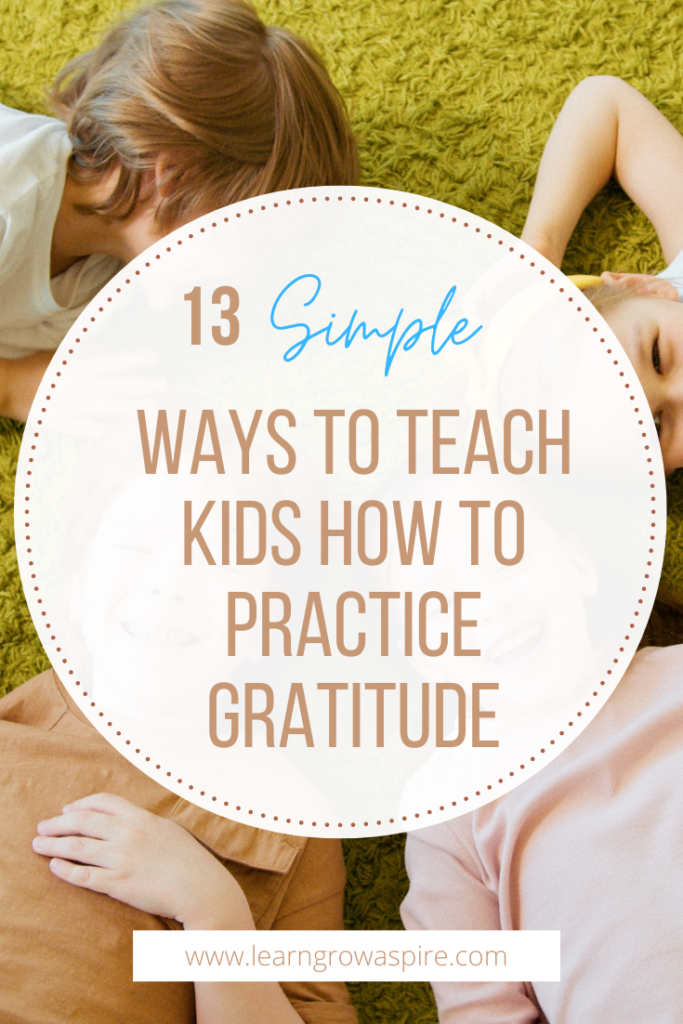
1. Nighttime prayer
Pray is the backbone of everything. Cultivate a habit of nighttime prayer with your kids by teaching your kids to say a thank you prayer every night before going to bed.
This can sound like: “Thank you, god, for everything you’ve blessed me with today. I’m grateful. Please continue to bless, guide, and protect me each day.”
A nighttime gratitude prayer allows your kids to go to bed with a grateful heart, mind, and body.
2. Daily gratitude reflection
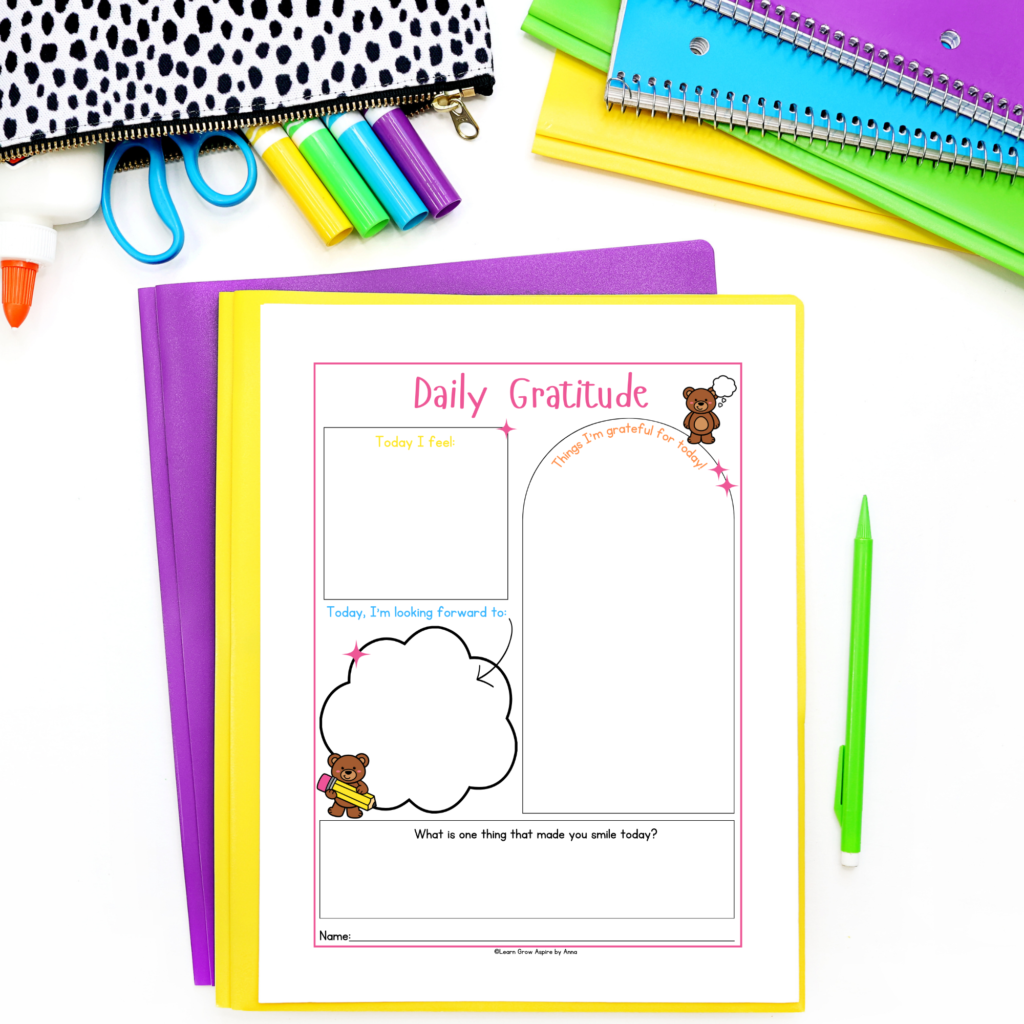
There’s so much science behind the benefits of journaling, from relieving stress to tapping into our creativity and boosting our immune system.
One of the best and easiest activities to get your kids started with a gratitude practice will be through journaling. Encourage your child to start a gratitude journal and list one or two things they are thankful for daily.
You can motivate them by gifting them with a colorful notebook/gratitude journal and trendy gel pens and markers. This simple practice can help them focus on the positive aspects of their lives and promote a sense of appreciation
Alternatively, you can grab this Gratitude Printable Planner Page (226 downloads )
3. Remind your kids to say please and thank you
Super simple and straightforward, right?! Yet many parents forget to teach this simple mannerism trait to their kids.
A great way to remind your kids to say please and thank you is by saying ‘please’ and ‘thank you’ at home.
” Can you please pass me the remote?” Rather than – “Pass the remote to me!”
” Thanks for throwing your laundry in the hamper.” Rather than – ” Wow, I’m shocked you didn’t leave your laundry on the floor today.”
You’re out shopping, and someone holds the door for you – say thank you rather than smile.
Someone says, ” Thank you!” to you. Reply – ” You are welcome!” Instead of – “yep, no worries.”
What you practice daily and in your home is often reflected in your kids.
4. Gratitude stone
This habit was first introduced to me when I read the book, ” The Magic.”
Go on a nature walk with your kids and find a lovely flat stone they can paint and write the word gratitude on.
You can also purchase one on a marketplace such as Etsy or Amazon.
Before your child goes to bed, have them hold the stone and express gratitude for the big ” WOW OF THEIR DAY.”
You can also opt-in to read the book, “The Gratitude Stone“ as a bedtime story.
5. Gratitude activities for kids’ printables

This set of 27 gratitude + social-emotional learning activities will help your kids become more appreciative of what they have while understanding their emotions.
Writing prompts in this gratitude activity pack include:
- grateful to be me,
- thankful for my family,
- grateful for my friends,
- grateful for nature,
- grateful for my home,
- thankful for the people in my life,
- daily gratitude journaling page,
- gratitude letter writing.
This gratitude journal can be used at any time of the year, over and over, and the best part is that it’s super affordable!
Shop Gratitude Journaling Activities!
6. Send thank you notes
As parents, we’ve taught our kids to say thank you when needed. You can take a step further by helping them create thank-you cards or notes for friends, family, or siblings to express their appreciation.
Creating thank-you cards will also allow your kids to tap into their creativity and writing skills. #win-win
For older kids, you can have them send emails to express gratitude. For example, whenever my mom visits us for vacation (she lives in Trinidad), my kids will send her an email a few days after she leaves to say thank you for blessing our home with her presence and spending time with them.
7. Express gratification for the things around
Before you can teach gratitude to your kids, you need to model it.
If you are not practicing gratitude, how can you expect your kids to? Next time you go outside for a walk, you can consider expressing gratitude for the beautiful day it is, the shining sun, the calmness of the day, or the sweet sounds of birds, etc.
8. Create a gratitude jar
This is one of my favorite gratitude activities to do with my kiddos!
As a homeschooling family, this works fantastic for us! Even if you’re not a homeschooling family having a gratitude jar will work wonders for you.
Every morning before we begin our day of schooling, each child writes something they are grateful for on a piece of paper, and it goes into our jar.
If you’re not a homeschooling family, you can do this activity after dinner, and then at the end of the month, open the jar and have everyone read what they were grateful for that month.
9. Celebrate kindness
Often we scold kids when they are not sharing their toys or don’t want to play with another. But how often do you praise your child when they share their toys or are kind to someone by holding the door for that person, sharing their toys, complimenting, etc.?
Celebrate kindness by recognizing when kindness is given or received by your kids because kindness goes a long way.
10. Storytelling Sessions
I love sharing growth mindset stories with my kids. Lately, I’ve been incorporating more gratitude and kindness stories into our lesson plan by reading books emphasizing gratitude and kindness.
After reading, we often discuss the character’s actions and how they showed gratitude or kindness in different situations.
Here are some of our favorite gratitude books:
11. Family Gratitude Circle
Start or end the day with a family gratitude circle.
This is something we typically do at our dinner table, where each family member shares something they are thankful for. Starting a family gratitude circle will not only reinforce the concept of gratitude but also strengthen family bonds.
12. Always see the bright side of things
As humans, we are not always going to be 100% optimistic, and that’s fair enough! But when possible, try finding the silver lining. Demonstrating that you are appreciative of every situation life throws at you because, many times, they are blessings in disguise.
Modeling this behavior will influence how your kids handle challenging situations in life.
13. Gratitude Scrapbooking
Young kids love cutting pics out of magazines, printing things off the web, and stickers. If your child already scrapbooks and loves it – gratitude scrapbooking may be a great activity to get started with.
Guide your child into drawing the people, places, activities, experiences, and things they are grateful for. Depending on your child’s age, you can introduce the concept of future gratitude by coaching your child to visualize her dreams and desires and map them out onto her scrapbook.
As she maps her desires out, remind her to have faith and believe everything she desires will come to her.
When my daughter Sophia was 8, I introduced the concept of vision boarding (where she will cut out images or words that represent things she wants or would like to feel) and arrange them on a poster board.)
Conclusion
Fostering a habit of gratitude in your kids can lead to a range of benefits that will support their emotional, social, and cognitive development.
Gratitude is a positive life skill that, once cultivated, will keep growing with your kids, allowing them to be stronger, happier, more confident, and more resilient humans.
These 11 gratitude activities for kids are wonderful ways to help them develop a positive mindset and an appreciation for the world around them. By fostering gratitude in kids, you can empower them to lead more joyful and fulfilling lives while also promoting empathy and kindness towards others. Start incorporating these gratitude activities into your child’s routine, and watch them grow into appreciative and compassionate individuals.
You May Also Like These Posts:
- Best subscription boxes for kids
- Fun And Meaningful Thanksgiving Activities For The Whole Family
- Best Growth Mindset Stories For Kids
- Best educational apps for kids with free trials
Pin These How To Teach Gratitude To Your Kids Ideas:
Head to your Pinterest Board and save these – how to teach gratitude to your kids ideas! And don’t forget to download our free gratitude activities for your kids. Link below.
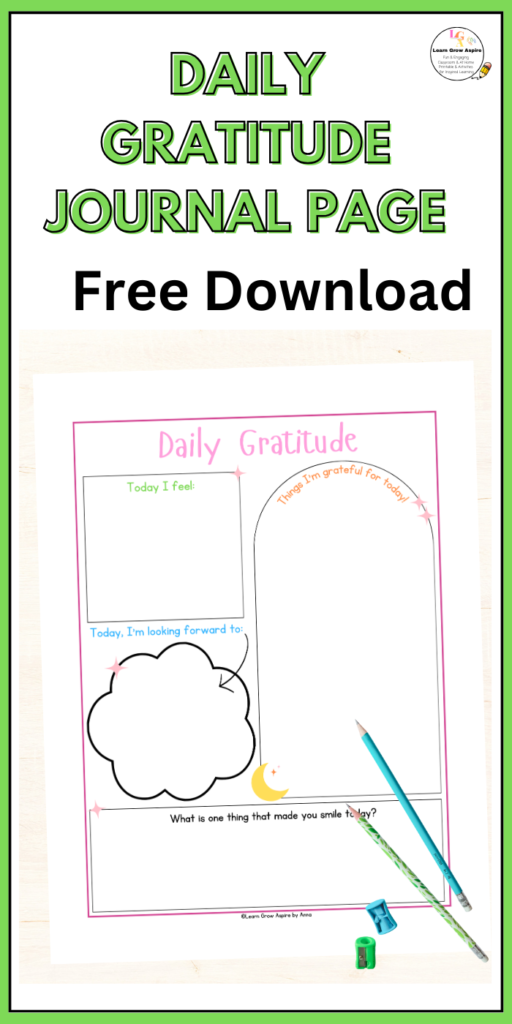
Gratitude Activities For Kids (2144 downloads )
Some of the links in this post may be affiliate links. I’m also an Amazon Affiliate and will occasionally link to some of my favorite Amazon products. I will receive a small percentage back if you purchase through my link. You won’t be charged a penny more if you shop through my links. That said, I do NOT recommend anything I do not use and love! Thank you for helping support my blog!
